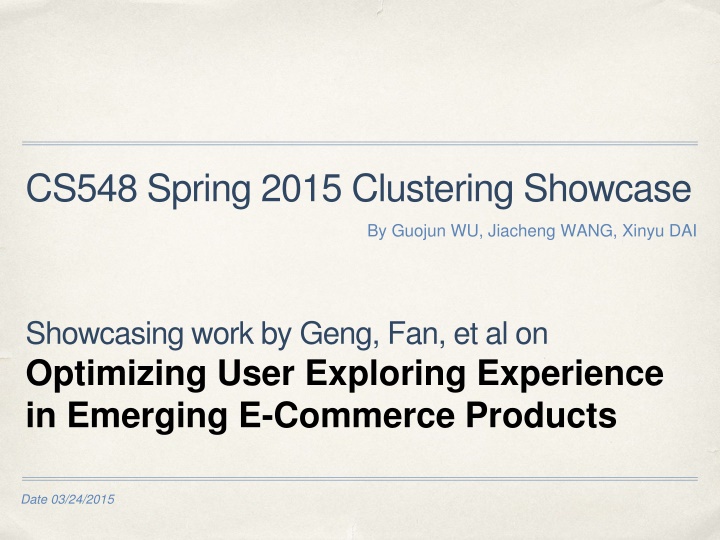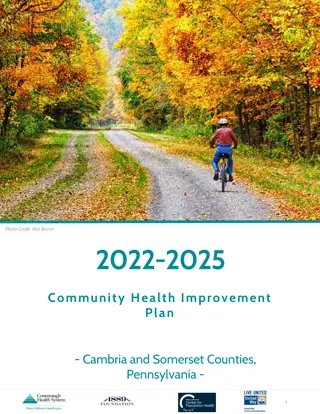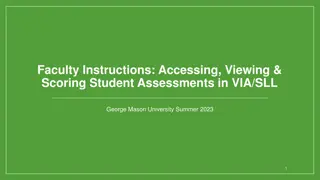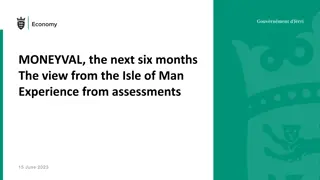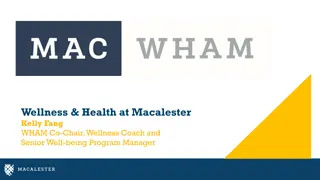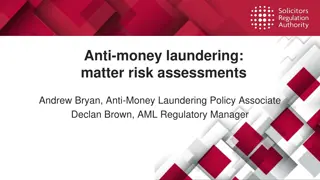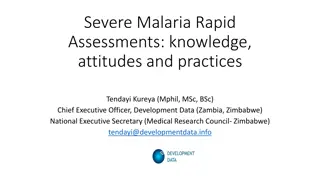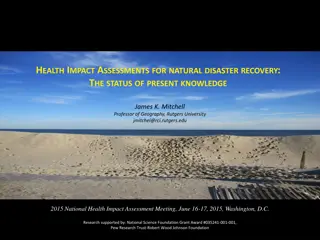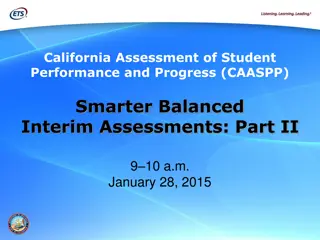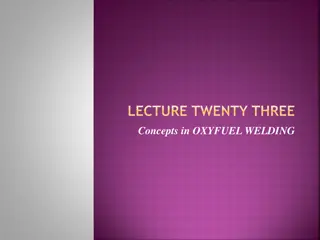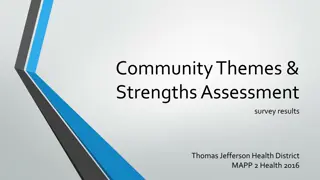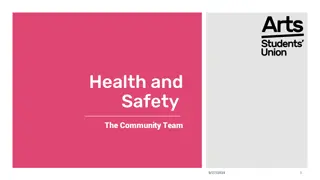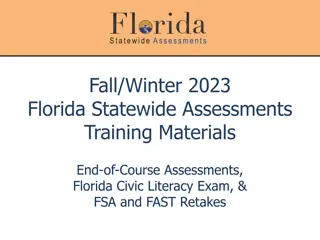Community Health Assessments: The MAPP Process Overview
Community health assessments are essential for understanding the health needs of a community. The Mobilizing for Action through Planning and Partnerships (MAPP) process provides a structured framework to assess community health needs, engage stakeholders, and develop plans for addressing health concerns. This comprehensive approach involves collaboration with diverse partners to improve health outcomes and leverage community resources effectively.
Download Presentation

Please find below an Image/Link to download the presentation.
The content on the website is provided AS IS for your information and personal use only. It may not be sold, licensed, or shared on other websites without obtaining consent from the author.If you encounter any issues during the download, it is possible that the publisher has removed the file from their server.
You are allowed to download the files provided on this website for personal or commercial use, subject to the condition that they are used lawfully. All files are the property of their respective owners.
The content on the website is provided AS IS for your information and personal use only. It may not be sold, licensed, or shared on other websites without obtaining consent from the author.
E N D
Presentation Transcript
CS548 Spring 2015 Clustering Showcase By Guojun WU, Jiacheng WANG, Xinyu DAI Showcasing work by Geng, Fan, et al on Optimizing User Exploring Experience in Emerging E-Commerce Products Date 03/24/2015
References Geng, X., X. Fan, J. Bian, X. Li, and Z. Zheng. Optimizing user exploring experience in emerging e-commerce products , in Proceedings of the International World Wide Web Conference (WWW '12), , pp.23-32. Lyon, France, 2012.
Taken From Geng, Fan, et al(2012) Optimizing User Exploring Experience in Emerging E-Commerce Products by Geng, Fan, Bian, et al
Categories in E-Commerce Compare to searching, users only need to choose among provided options, which will save users own efforts of formulating queries, especially when they do not exactly know what they are looking for. Taken from www.amazon.com Taken from www.play.google.com
The Problem In many emerging e-commerce services, well-defined hierarchical structures are not always available; in some other e-commerce services, the pre-defined hierarchical structures are too coarse and less intuitive to distinguish properties according to users interests. This will lead to very bad user experience.
Chaos in Google Play Numerous Apps in every category -1.41M Apps and 17 categories(not include Game), which make user hard enough to find Apps they need. Too many similar apps -App user want may be buried in huge amount of other apps with similar name but different function. Taken from http://blog.appfigures.com/app-stores-growth-accelerates-in-2014/
The Data Set Yahoo! App Search Data collected in one month: Sep 2nd,2011 to Oct 12th, 2011 12191 queries and 40912 query-app pairs #query #query pairs App search 6263 21910 Web search 5919 54342 Taken from Geng, Fan, Bian, et al.(2012)
5 Step Process 1.Retrieve user queries and click information data set 2.Define query similarity 3.Analyze the properties of the clustering problem and propose a hierarchical clustering approach 4.Construct browsing lists for all clusters 5.Present evaluation based on 3 and 4
Similarity Functions Similarity Based on Query-documents Pairs -measure query similarity: keyword based similarity and result based similarity Similarity Based on Query-Urls Pairs -About 84% query pairs extracted from web search logs are not covered by those extracted from the e-commerce searching logs. Combination of Query-documents and Query-Urls Pairs Similarity Measurements
Similarity Based on Query- documents Pairs(1) Similarity according to both term similarity and co-click information
Similarity Based on Query- documents Pairs(2) Similarity Based on Keywords Similarity Based on Documents
Click Number Distribution Taken from Geng, Fan, Bian, et al.(2012)
Similarity Based on Query-Urls Pairs Similarity Based on Query-Urls Pairs Taken from Geng, Fan, Bian, et al.(2012)
Similarity Combination Similarity Combination Taken from Geng, Fan, Bian, et al.(2012)
Hierarchical Clustering Clustering queries into small clusters using Spectral Clustering (Cluster L2) Then, merge small clusters into larger clusters.(Cluster L1)
Clustering L2 Rules(1) Every cluster should have only one connected component. Taken from http://en.wikipedia.org/wiki/Connected_component_(graph_theory)
Clustering L2 Rules(2) Merge the highly similar clusters in the cluster L2 level into one Taken from http://en.wikipedia.org/wiki/Connected_component_(graph_theory)
Clustering L2 Rules(3) To name the cluster, we build a vocabulary for each cluster, and select k most frequent words. Re-order the selected words according to its original order in queries within the cluster.
Clustering L1 Rules Generate a vocabulary list according to names of cluster L2. For each vocabulary in vocabulary list, create a new L1 cluster.
Cluster Example Category Cluster L1 Cluster L2 User queries Bruce lee Bruce-lee-movies Martial arts movies Netflix movies instantly Netflix for TV movies Netflix-movies Entertainments Mp3 music Mp3 songs Mp3-music music Yahoo music Music Yahoo-music Taken from Geng, Fan, Bian, et al.(2012)
Construct Browsing Lists for All Clusters 1. Rank frequently clicked items of queries in the cluster on the top 2. Retrieve highly ranked items using queries in the cluster and blend the results of all queries 3. Aggregate the multi-level clusters Taken from Geng, Fan, Bian, et al.(2012)
Qualitative Evaluation of Hierarchical Clusters Qualitative evaluation based on editorial intervention A.define guidelines for cluster editing B.editors optimize hierarchical taxonomy C.compare differences before and after editorial intervention
Guidelines for cluster editing Level Action Description user queries delete Remove the queries which are supposed not to belong to the cluster L2 cluster L2 delete Remove the clusters which are supposed not to belong to the cluster L1 rename Rename the cluster name if the editor think the current name is not really suitable or readable for this cluster. merge Merge the highly similar clusters in the cluster L2 level into one cluster L1 rename Rename the cluster name if the editor think the current name is not really suitable or readable for this cluster merge Merge the highly similar clusters in the cluster L2 level into one Taken from Geng, Fan, Bian, et al.(2012)
What did editors modify? All the professional search editors were invited to judge the quality of each level of the generated hierarchical clusters based on cluster names and the corresponding included queries. The editors were able to perform three possible actions (rename, delete and merge) in different levels to optimize the hierarchical clusters and ideally build a complete taxonomy of mobile apps
Editor Modification Results Clustering Statistics before and after Editorial Intervention Average Number of Editors Actions to Optimize Hierarchical Taxonomy Per Category Taken from Geng, Fan, Bian, et al.(2012)
Quantitative Evaluations Compared with Android Market(1) Figure: Interfaces in the SBS evaluation
Quantitative Evaluations Compared with Android Market(2) Efficiency of Assisting Users to Discover Interested Apps - by using our interface, editors skipped less apps on 56% of the categories and found more interested apps on 60% categories Effectiveness of Hot App Symbols - editors reported that those hot symbols did affect and arouse their interests to click the apps in 51.7% of categories Effectiveness of Sub-categories - about 75% editors thought that the added sub-categories are helpful Preference and Other Feedbacks - editors were more satisfied with our browsing interface in 36.7% of the categories, with Android Market in 23.3% of the categories, and show no preference in 40% of the categories
Evaluation figure Figure: Percentage of sub-categories preference Figure: Percentage of browsing method preference
Thank you for listening! Questions are welcomed.
